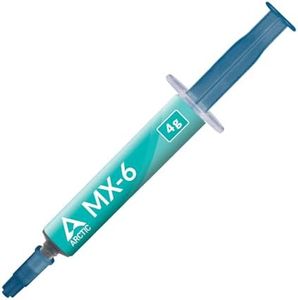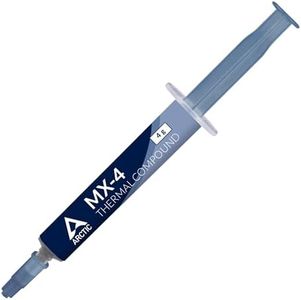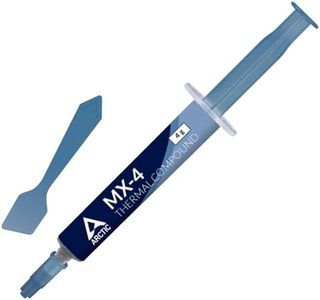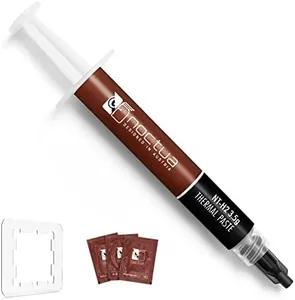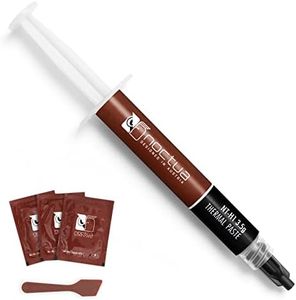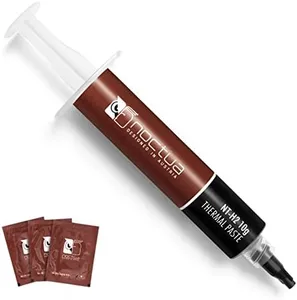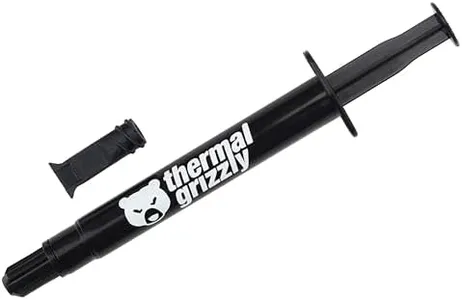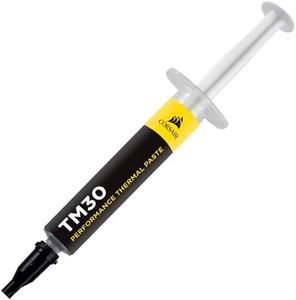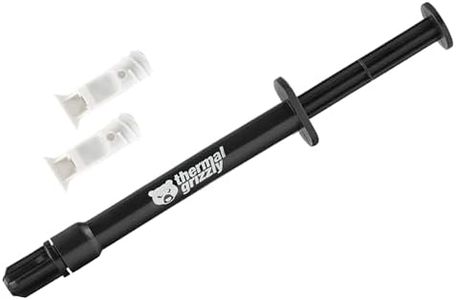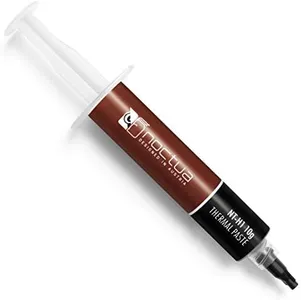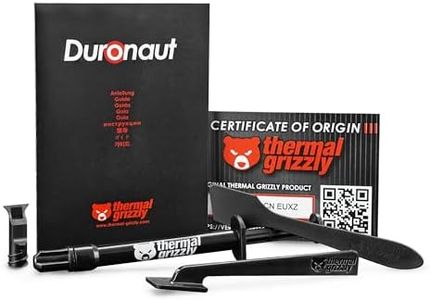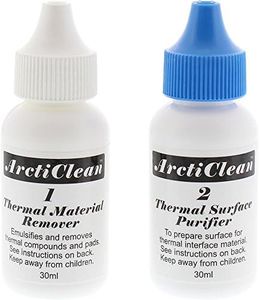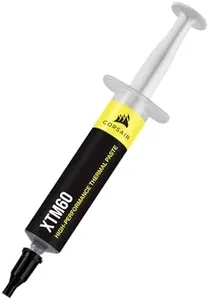We Use CookiesWe use cookies to enhance the security, performance,
functionality and for analytical and promotional activities. By continuing to browse this site you
are agreeing to our privacy policy
10 Best Thermal Pastes
From leading brands and best sellers available on the web.Buying Guide for the Best Thermal Pastes
Choosing the right thermal paste may seem like a small detail, but it can make a noticeable difference in how efficiently your computer's CPU or GPU stays cool. When you apply a thermal paste between your processor and its heat sink, it helps to fill tiny gaps that air would otherwise occupy. Air is a poor conductor of heat, while thermal paste is designed to make sure as much heat as possible goes from your chip to the cooler. The right product can help your system run quieter, cooler, and possibly even last longer. To pick the thermal paste that fits your needs best, consider the following key specs and features.Thermal ConductivityThermal conductivity is a measurement of how efficiently the paste can transfer heat, generally given in watts per meter-kelvin (W/mK). Higher numbers mean better heat transfer, which is crucial if you're pushing your PC hard with gaming, heavy workloads, or overclocking. Low to mid-range thermal pastes might list figures lower than 5 W/mK; these are often enough for basic or office computers. Mid-range pastes typically advertise conductivity values between 5 and 10 W/mK, suiting most gamers or those who want a slight edge in performance. Premium options may go beyond 10 W/mK, and these are best for enthusiasts, overclockers, or anyone who prioritizes the lowest possible temperatures. To choose what’s right for you, think about how intensely you use your computer—casual users don't need ultra-high conductivity, but more demanding setups benefit from a higher value.
Paste Type (Material Composition)Thermal pastes can be made from different materials, most commonly silicone-based, metal-based (like those with silver or other metals), or ceramic-based compounds. Silicone and ceramic formulations are generally less electrically conductive, making them safer for beginners and regular use since spills won’t risk short-circuiting hardware. Metal-based pastes often provide higher thermal performance but can be electrically conductive, so they require more careful application. If you prioritize ease of use and safety, stick with ceramic or silicone types. If you’re chasing top-tier cooling performance and are confident in careful application, consider a metal-based paste.
Ease of Application and ViscosityViscosity describes how thick or runny the paste is, which affects how easy it is to spread smoothly between the processor and the heat sink. Thicker pastes are less likely to leak or spill, but they may take some effort to spread evenly. Thinner pastes are easy to apply but can be messy if overdone. For beginners, a medium-viscosity paste that’s not too runny or too stiff makes application easiest and avoids mistakes. If you’re comfortable with application, you might prefer a thinner paste for the best surface contact.
Longevity and DurabilityOver time, thermal paste can dry out or degrade, losing effectiveness and requiring re-application. Some pastes are engineered for long-term stability and can last several years without much performance drop, while budget or basic pastes may need refreshing more frequently. If you want to avoid regular maintenance, look for a product noted for its longevity or stability. If you're someone who regularly upgrades or works inside your PC, longevity is a bit less important since you’re likely to refresh the paste more frequently anyway.
Electrical ConductivitySome thermal pastes, especially those made with metals, can conduct electricity. This means if you accidentally get paste on parts of your motherboard or CPU pins, it could theoretically cause a short circuit and damage components. Non-conductive pastes are safer and generally preferred for novice users. If you have steady hands and experience, and you want that last bit of thermal performance, you may opt for a slightly electrically conductive but high-performing paste—but always apply with care.
Curing TimeCuring time is how long it takes for the paste to reach its full performance after being applied. Some pastes work at almost full efficiency right away, while others may need several hours or days of system use to 'cure' and achieve optimal heat transfer. If you want immediate results, look for non-curing or fast-curing options. If a slight delay in peak efficiency is fine for you, a paste that cures over time is perfectly acceptable.
